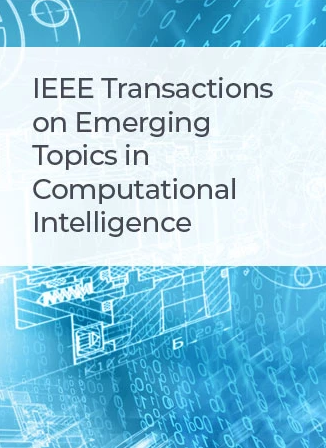面向概率交流优化功率流的物理信息图囊生成式自动编码器
IF 5.3
3区 计算机科学
Q1 COMPUTER SCIENCE, ARTIFICIAL INTELLIGENCE
IEEE Transactions on Emerging Topics in Computational Intelligence
Pub Date : 2024-04-02
DOI:10.1109/TETCI.2024.3377671
引用次数: 0
摘要
由于电力需求的不断增长以及发电过程中固有的不确定性,为随机交流优化功率流(AC-OPF)问题找到高效的解决方案变得至关重要。然而,AC-OPF 的非线性和非凸性质,加上可再生能源整合带来的日益增长的随机性,为实现快速可靠的解决方案带来了巨大挑战。为了应对这些挑战,本研究提出了一种新颖的基于图的生成方法,它能有效捕捉电力系统测量中的不确定性,从而学习发电调度和电压设定点的概率分布函数。我们的方法包括将电力系统建模为加权图,并利用深度谱图卷积网络从输入图测量中提取强大的空间模式。我们引入了一种独特的变分方法,用于识别最相关的潜在特征,以准确描述交流-OPF 问题的设定点。此外,还提出了一种带有新型贪婪动态路由算法的胶囊网络,用于精确解码潜在特征和估计概率 AC-OPF 问题。此外,还在模型的训练过程中加入了一套精心设计的物理信息损失函数,以确保遵守电力系统的基本物理规则。值得注意的是,所提出的物理信息损失函数不仅通过有效正则化深度学习模型提高了交流-OPF 估计的准确性,还显著降低了时间复杂性。在各种基准上进行的广泛实验评估表明,我们提出的模型在相关标准方面优于概率和确定性方法。本文章由计算机程序翻译,如有差异,请以英文原文为准。
Physics-Informed Graph Capsule Generative Autoencoder for Probabilistic AC Optimal Power Flow
Due to the increasing demand for electricity and the inherent uncertainty in power generation, finding efficient solutions to the stochastic alternating current optimal power flow (AC-OPF) problem has become crucial. However, the nonlinear and non-convex nature of AC-OPF, coupled with the growing stochasticity resulting from the integration of renewable energy sources, presents significant challenges in achieving fast and reliable solutions. To address these challenges, this study proposes a novel graph-based generative methodology that effectively captures the uncertainties in power system measurements, enabling the learning of probability distribution functions for generation dispatch and voltage setpoints. Our approach involves modeling the power system as a weighted graph and utilizing a deep spectral graph convolution network to extract powerful spatial patterns from the input graph measurements. A unique variational approach is introduced to identify the most relevant latent features that accurately describe the setpoints of the AC-OPF problem. Additionally, a capsule network with a new greedy dynamic routing algorithm is proposed to precisely decode the latent features and estimate the probabilistic AC-OPF problem. Further, a set of carefully designed physics-informed loss functions is incorporated in the training procedure of the model to ensure adherence to the fundamental physics rules governing power systems. Notably, the proposed physics-informed loss functions not only enhance the accuracy of AC-OPF estimation by effectively regularizing the deep learning model but also significantly reduce the time complexity. Extensive experimental evaluations conducted on various benchmarks demonstrate our proposed model's superiority over both probabilistic and deterministic approaches in terms of relevant criteria.
求助全文
通过发布文献求助,成功后即可免费获取论文全文。
去求助
来源期刊

IEEE Transactions on Emerging Topics in Computational Intelligence
Mathematics-Control and Optimization
CiteScore
10.30
自引率
7.50%
发文量
147
期刊介绍:
The IEEE Transactions on Emerging Topics in Computational Intelligence (TETCI) publishes original articles on emerging aspects of computational intelligence, including theory, applications, and surveys.
TETCI is an electronics only publication. TETCI publishes six issues per year.
Authors are encouraged to submit manuscripts in any emerging topic in computational intelligence, especially nature-inspired computing topics not covered by other IEEE Computational Intelligence Society journals. A few such illustrative examples are glial cell networks, computational neuroscience, Brain Computer Interface, ambient intelligence, non-fuzzy computing with words, artificial life, cultural learning, artificial endocrine networks, social reasoning, artificial hormone networks, computational intelligence for the IoT and Smart-X technologies.
 求助内容:
求助内容: 应助结果提醒方式:
应助结果提醒方式:


